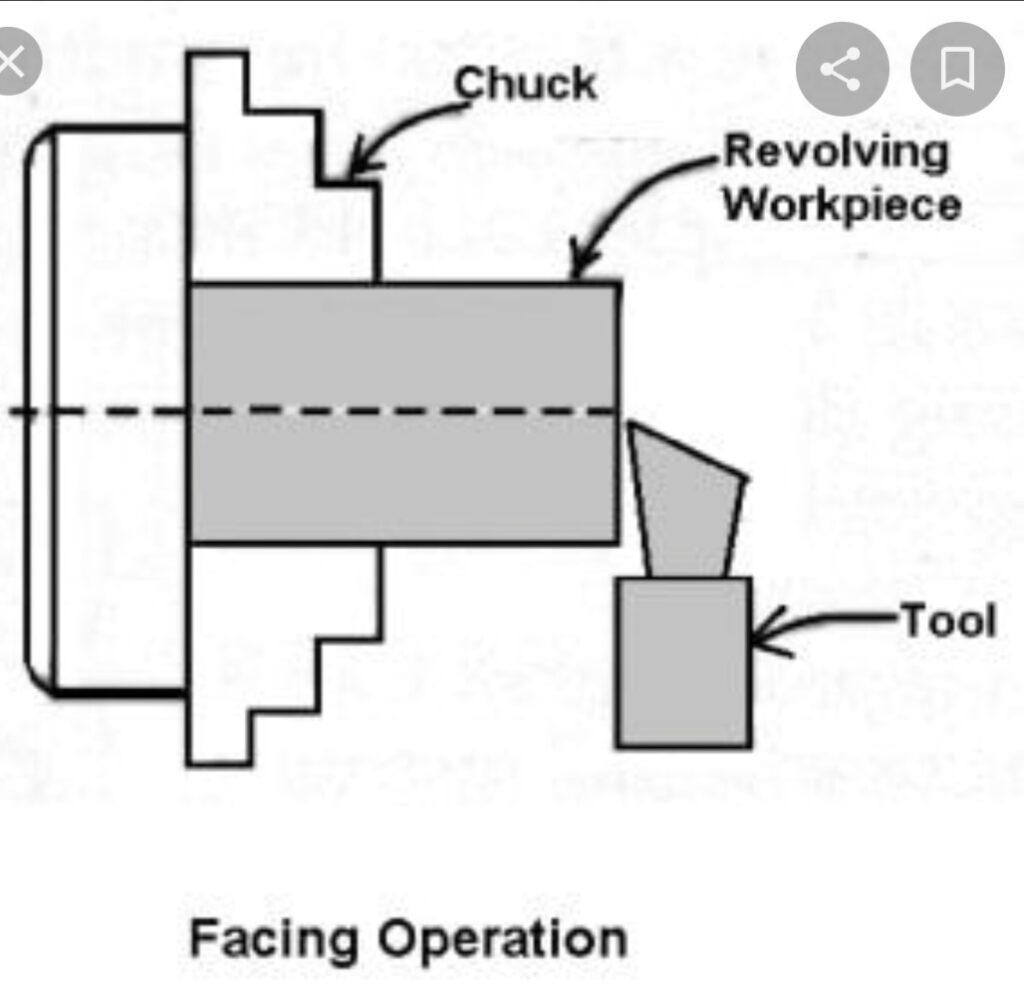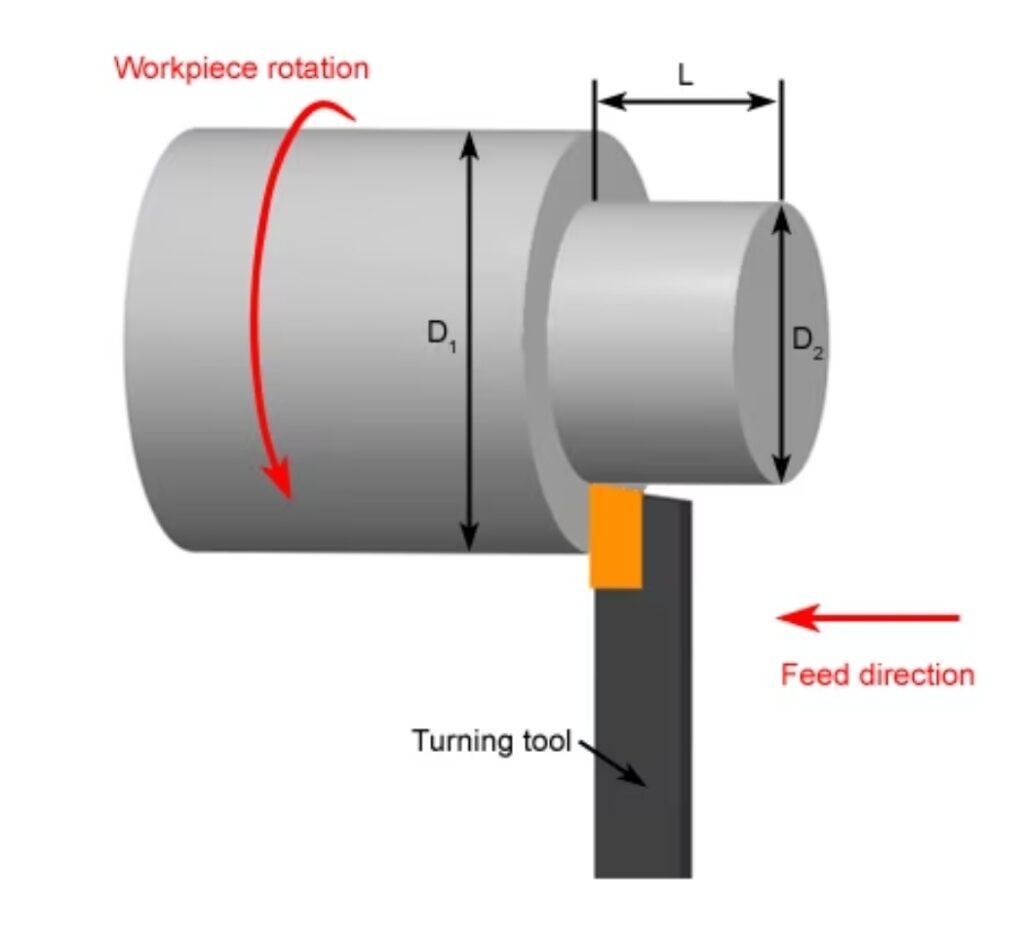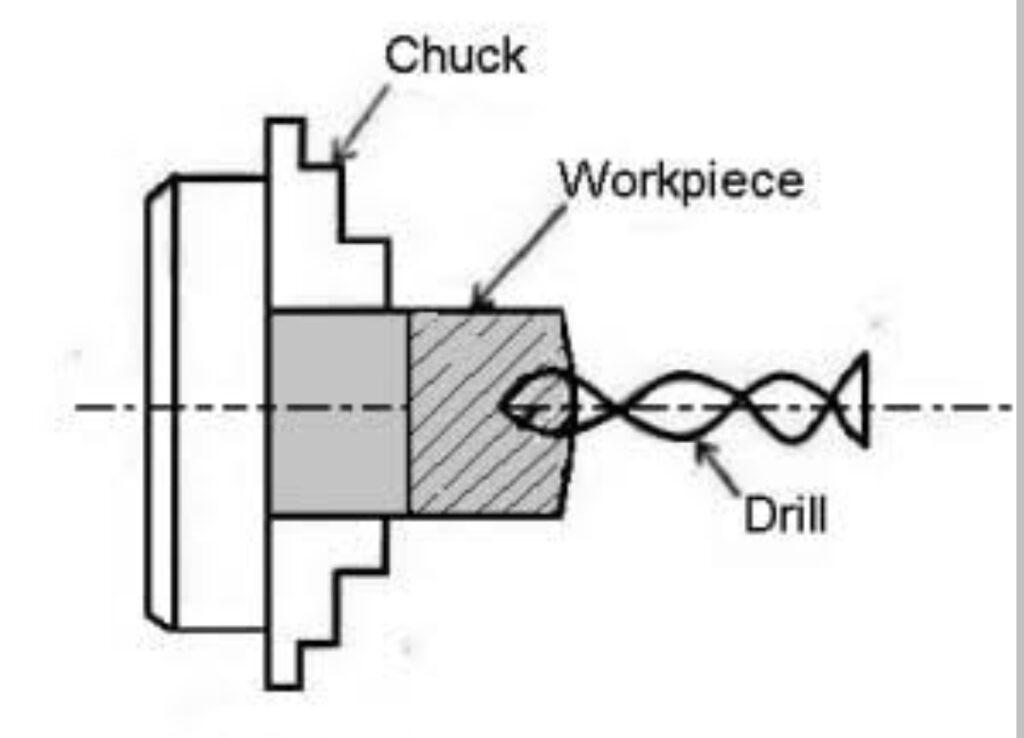The lathe machine operations are classified into three main categories and are as follows Following are the Lathe machine operations done either by holding the workpiece between centres or by a chuck:Turning Operation
between centres or by a chuck:Turning Operation
- Facing Operation
- Drilling
- Turning
FACING
It is an operation of reducing the length of the workpiece by feeding the perpendicular to the lathe axis. This operation of reducing a flat surface on the end of the workpiece. For this operation, regular turning tool or facing tool may use. The cutting edge of the tool should set to the same height as the centre of the workpiece. Facing consist of 2 operations Roughing: Here the depth of cut is 1.3mm Finishing: Here the depth of cut is 0.2-0.1mm

Turning:
It is the most common type of operation in all lathe machine operations.
Turning is the operation of removing the excess material from the
workpiece to produce a cylindrical surface to the desired length. The job
held between the centre or a chuck and rotating at a required speed. The
tool moves in a longitudinal direction to give the feed towards the
headstock with proper depth of cut. The surface finish is very good

Drilling:
Drilling is the operation of producing a cylindrical hole in a workpiece. It is done by a
rotating tool, the rotating side of the cutter, known as a drilling drill. In this operation, The
workpiece is revolving in a chuck or a faceplate and the drill is held in the tailstock drill
holder or drill chuck The feeding is adopted is affected by the movement of the tailstock spindle. This method is adopted for the drilling of regular-shaped workpiece. Reaming: Reaming is the operation of finishing and sizing a hole which has


Really no matter if someone doesn’t be aware of then its up to other viewers that they will assist,
so here it takes place.セクシー ランジェリー
I visited various sites however the audio feature for audio songs existing at this website is in fact fabulous.
This is really interesting, I’ll check out your other posts!